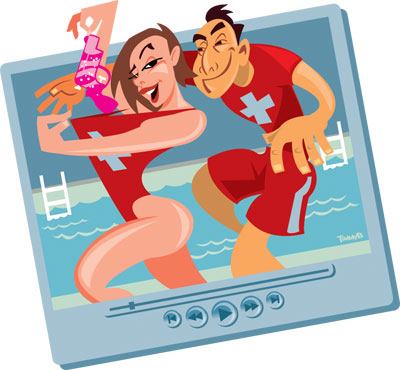THE LESSONS
1. Develop a social media policy. The policy should encompass all aspects of social media. We find our young staff blurs the lines of what constitutes acceptable behavior in a professional environment and what should be shared online. Safeguarding information received while on duty must be considered a high priority. This includes what can and should not be shared, posted, or uploaded through text message or other social media avenues.
2. Discuss the do’s and don’ts with your staff. Common courtesy, decency, good manners and the golden rule apply in social media. Before posting, ask yourself: How will this be received by others? Am I infringing on someone else’s privacy? Is this funny or harmful? What are the potential consequences? If taken during my shift, would I still think this was appropriate if my supervisor found it? Are there minors in the video? Do I have permission from the individuals in the video to post it?
3. Communicate consequences. Explain the impact of poor decisions on future or current employment. We are taking the opportunity to educate our teen work force on the potential consequences of their use of social media in the workplace. When used incorrectly, social media can backfire and jeopardize a current job status or future job offer.
These days, social media encompasses every aspect of life. It also allows adolescents and teens to be expressive.
Sometimes too expressive.
A quick YouTube or Google search can sometimes reveal surprising images and give you a glimpse into what really happens at your facility while you’re away.
The city of Chandler, Ariz., currently uses a YouTube channel to air episodes of the city’s cable channel show. One day, following the most recent episode of our department’s cable show, YouTube recommended a non-department video called “A Day at the Aquatic Facility.”
This one-minute cell phone video clip featured one of our male and female lifeguards play-fighting over a squirt gun while at work in the guard room. They could easily be identified as city staff due to their uniforms, and the facility name was listed in the video clip title. These employees were engaged in unprofessional conduct and did not represent a positive image of the young people working at this facility.
The female lifeguard placed the squirt gun down the front of her swimsuit and the male lifeguard was trying to get the toy back from her. The video had been online for more than a year with only 30 lifetime views, but the public perception of our staff was in jeopardy — and the potential consequences of this image were numerous.
Fortunately, the staff members were quickly identified. The person responsible for shooting and posting the video was contacted, and the video was removed.
The benefits of social media and the use of Twitter, Facebook and YouTube have provided us the opportunity to interact with our customers and provide a new level of service. As an operator, the ability to connect with, and receive feedback from, our customers is very important and provides valuable insight about our performance.
We understand we cannot control the content that others put on the Internet, but we can monitor it, and provide a response when appropriate. We will continue to use these tools to promote our services and engage with the community.
This lesson has provided us with a reminder to use due diligence with our staff to maintain a positive online persona of the city we represent.
